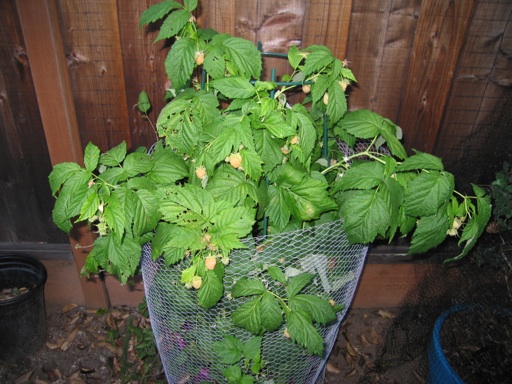
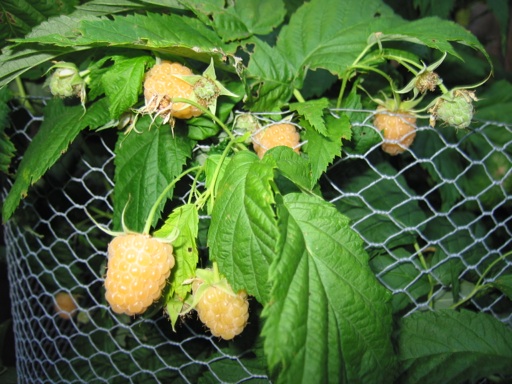
These are photos of my Anne rasberry bush. I purchased it as a bare root plant from an online mail order website about three years ago. I am growing it in a pot, because raspberries can spread quickly when grown in the ground. So far, it has taken well to the pot. It has produced berries every year. It even produced a few berries in its first growing season. I support the raspberry canes with chicken wire and a tomato cage. Because the canes need to be pruned each winter, I don’t think it’s worth the effort to tie the canes to a trellis.
Anne is an everbearing raspberry that is supposed to produce a first crop of berries in early summer and a second crop of berries in late summer into fall. Last year, I harvested a few berries in late June and early July, and larger crop mainly in August. This year, its first crop of raspberries starting ripening in late May. I have been harvesting golden raspberries every few days for the past two weeks now.
I really enjoy the taste of these raspberries. They have a nice sweet-tart flavor. They are less tart than red rasberries. The only problem I’ve had with this plant is insects eating some of the leaves and berries. I haven’t been able to determine what type of insect it is yet, and I don’t want to spray the plant while it has berries on it.
I have read that raspberries prefer climates that have slowly warming temperatures in the springtime. We have that climate here, where highs are still mainly in the 70s, and it has been mild since early March. I’ve noticed that the leaves of this raspberry plant can look burnt after a heatwave. I have it now growing in a spot that gets morning sun and afternoon shade after about 1 pm, and it seems to like that degree of exposure better than full sun all day long.
June 05 2013 | Raspberries | Comments Off on Golden Raspberries
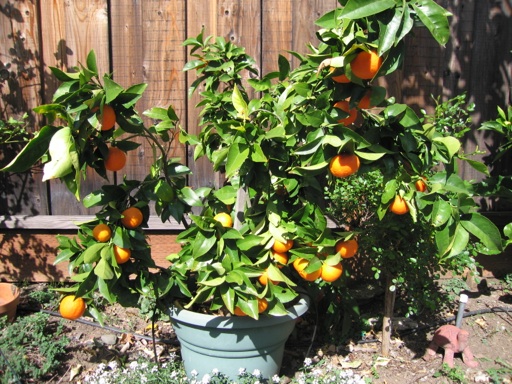
This is a photo of a page mandarin orange bush we have growing in pot. I had this plant growing in the ground for years, but it always looked unhappy. It grew very little and had yellowing leaves and few fruits, despite repeated applications of fertilizer. It was growing in a spot where it had root competition from larger bushes.
After I transplanted it into a pot, it started growing, greening, and blooming. It was full of fruit, and we have been enjoying them for the past month. They have a very good flavor. I purchased this particular variety, page mandarin, because some people have written that it is one of the best mandarins. The flesh of the fruits are a bit chewy like most mandarins, but they are much more tender than some other varieties like Satsuma.
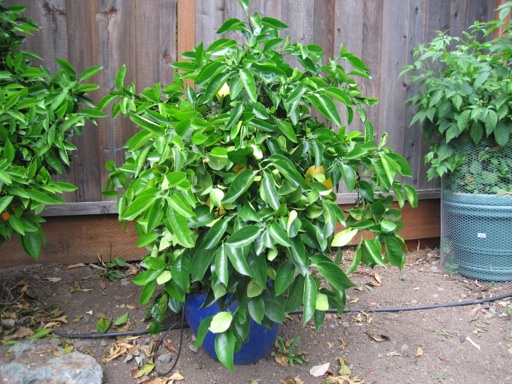
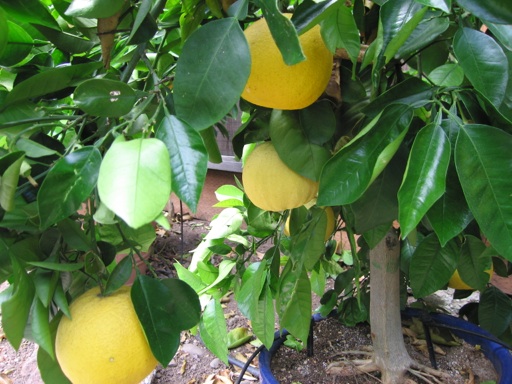
These are current photos of our potted Oroblanco citrus. It has grown very well in the past two years since we bought it, even though its pot is small compared to the size of the plant. It is full of fruit this spring. It has about 15 Oroblanco fruits, which is a lot of fruit for a plant this size. As you can see from the second picture, each fruit is big, about the size of large grapefruit. Last year, our Oroblanco produced a few fruits, but they were sour, bordering on inedible. So far this year, the fruits have been sweet and tasty. The flavor is dramatically better than last year. Perhaps the warm weather we’ve had this spring has been the cause.
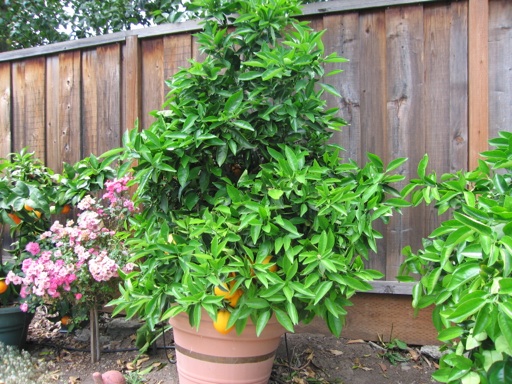
This is a current photo of our potted Washington navel orange bush. It has grown rapidly since I transplanted it into a pot a few years ago. It was loaded with fruit about a month ago. I’d estimate this small bush had over 2 dozen oranges. We have already eaten about half of them. They usually just fall to the ground when they are ripe. Its oranges are very large in size, but the flavor is not quite as good as the much older navel orange bush we have growing in the ground in another part of the yard.
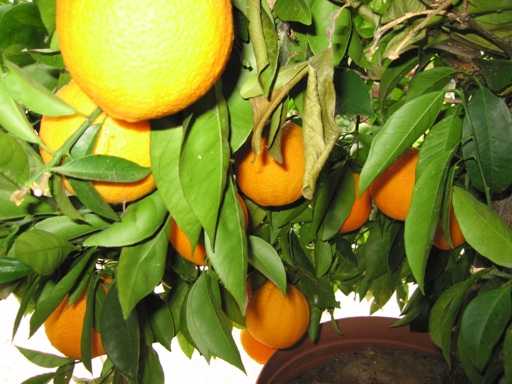
May 07 2013 | Mandarins and Oranges and Oroblanco | Comments Off on Citrus in Pots
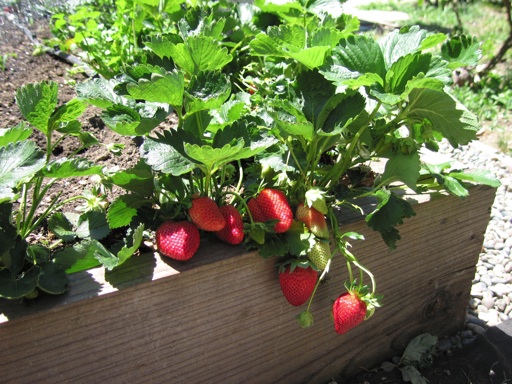
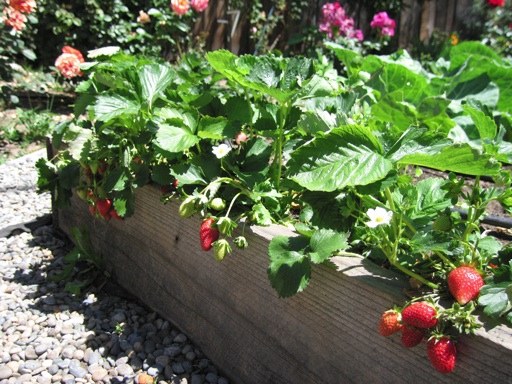
I have been growing strawberries in my backyard for years, but I have never gotten more than about a half a dozen ripe berries before the first week of May. This year, I started getting a few ripe strawberries two weeks ago. Over the past 10 days, I have picked a bowl full of strawberries every few days. I have never had so many ripe strawberries before the end of April.
I attribute the early strawberries mainly to the weather. We have had warmer than average weather for the past couple of months, with many more days in the 70s and 80s in April than we typically receive. The average afternoon high temperatures here in April are in the upper 60s to low 70s. Another factor may be the variety of strawberry that I grow. I used to grow mainly Sequoia strawberries. Now most of my strawberries are Chandler, although I still have some Sequoias. Sequoias have a better flavor, but Chandler has many other advantages that make it my favorite strawberry.
Chandler produces many more berries than other varieties I have grown (which include Quinault, Seascape and Aromas), and its berries are typically larger than Sequoia. Also, Chandler doesn’t grow as many leaves as Sequoia, which makes it easier to find the berries and makes for less cover for snails and slugs to hide in. Sequoias grow lots of medium to small leaves, while Chandler tends to grow fewer but larger leaves. Finally, Chandler berries are firmer than Sequoia and less prone to rotting. I am growing all of my strawberries this year as a border around my raised garden beds.
Most of the strawberry plants I am growing now grew as runners from plants that I bought from a nursery and planted last spring. Although some people say to cut off strawberry runners, I let them grow, because I have found that strawberry runners from the previous year grow well and produce lots of berries in the next season. Often, they produce better than nursery transplants in my experience. And since strawberries only last a few years, you either have to let the runners grow or buy nursery transplants every few years to replace the old ones.
April 30 2013 | Strawberries | Comments Off on Early Strawberries
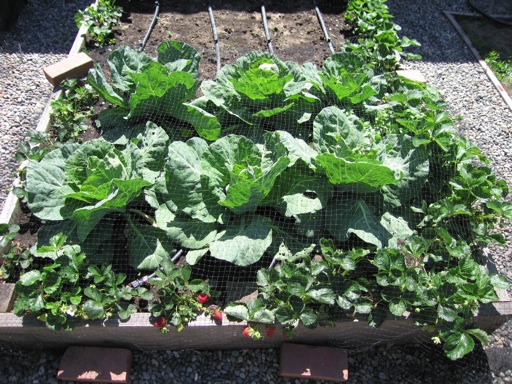
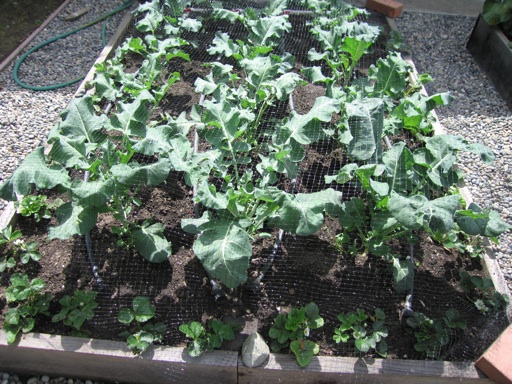
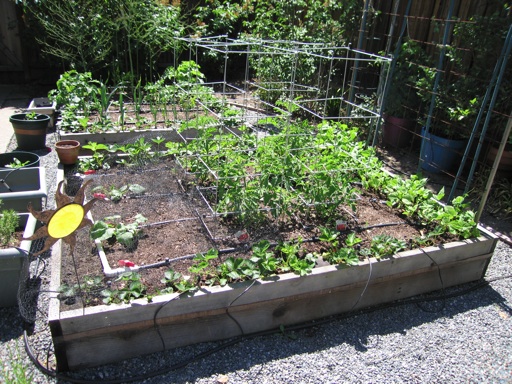
The first vegetables I planted for 2013 were two cool weather crops: cabbage (first picture) and broccoli (second picture). I planted transplants that I bought from a nursery in late February, rather than starting them by seed. Most seeds wouldn’t sprout in winter here, because it’s not warm enough. I would have had to start by seed indoors and then transplant the seedlings outdoors in late winter. Buying and planting nursery transplants is easier. No hardening off is required.
One year, I planted broccoli seeds in one of our backyard raised garden beds in July for a fall crop. However, the broccoli wasn’t mature enough by late fall, so it overwintered and matured in February. The broccoli crowns were very small, probably because the temperature was too cool that time of year for ideal growth. Next time, I would plant broccoli seeds outdoors in June for a fall harvest.
Our cabbage is nearly ready to harvest. This is my first time growing cabbage. From what I have read, it can be harvested as soon as a cabbage head forms. It was very easy to grow. I watered two to three times a week and fertilized weekly with water soluble fertilizer. I planted a dwarf variety that matures in about 60 days after setting out transplants. I also put bird netting over them, mainly to keep the snails away. I have found that bird netting is more effective than snail bait, which dissolves in about 2 weeks. I discovered that when I used bird netting to keep the birds away from my strawberries (which are growing around the beds as a border) that snails would get caught in it. They have a hard time crawling through the holes in the netting and usually get stuck in it, so they can’t make it into the beds.
I planted Waltham Broccoli. The Waltham broccoli produced very small crowns in early April, only about an inch or 2 wide (front plants in second picture). I’ve learned that in order to get large crowns, broccoli plants need to grow very large first. If the plants generate crowns when they are still medium size, the crowns will be too small.
I’ve planted broccoli several times before, and I’ve only had success in getting them to produce large crowns once. That time, I planted in mid-March and harvested crowns in early June. Apparently, proper timing of your broccoli plantings is key to success. They were growing in the same bed as the ones in the above photos.
I set out tomato transplants in mid-March. I also planted pole bean seeds and zucchini seeds in the same bed (third picture). All of these are growing well, as are our strawberries around the edges of the beds. I set out tomato transplants that I buy from a nursery rather than staring by seed outdoors to get a head start on the growing season. Each year for the past four years that I have planted tomato transplants in the garden in March, I have had our first ripe tomatoes in early July. I also have tomato seedlings growing in the same bed. They are growing where tomatoes fell off the vine and rotted last year. But these seedlings are tiny compared to the nursery transplants and are getting crowded out by them.
April 20 2013 | Broccoli and Cabbage | Comments Off on Spring Vegetables
What’s been blooming in our yard this month:
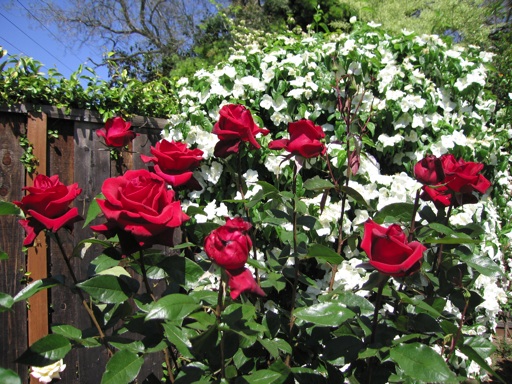
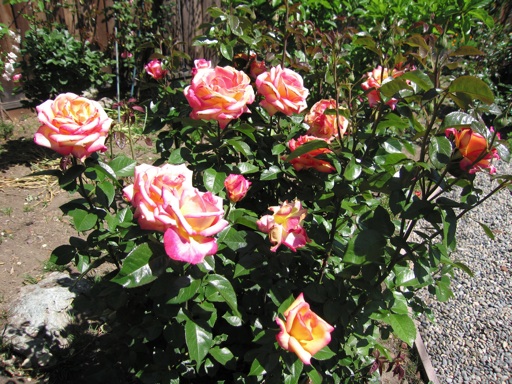
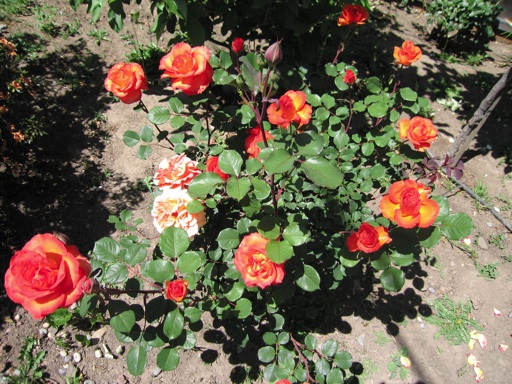
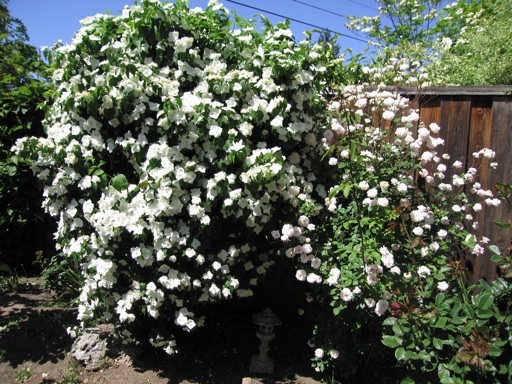
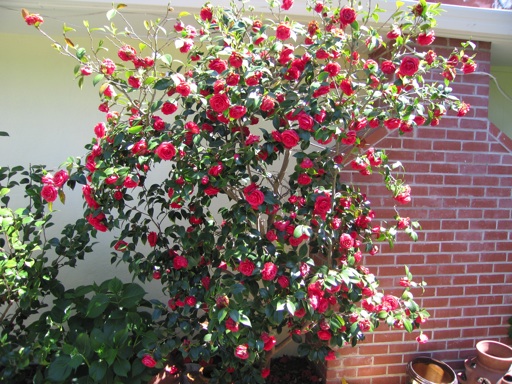
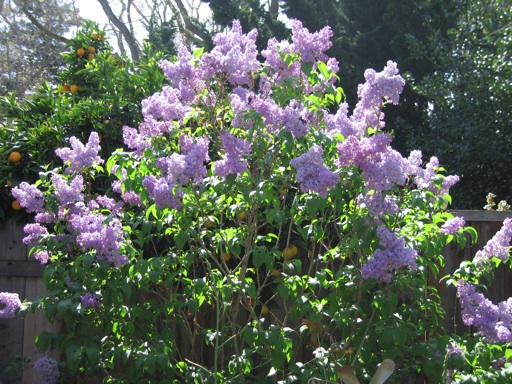
I’ve shown most of these flowers in posts from previous years, but I can’t resist showing them again, because so many great flowers are in bloom in our yard this month. The first three pictures are showing our Black Magic rose (long lasting flowers), Sheila’s Perfume rose (very fragrant), and ginger Snap rose (deep orange color). The fourth picture shows our white philadelphus (left) and our pink Cecil Brunner rose. The fifth picture is one of our red Camellias (not sure which variety). The roses, philadelphus and the red camellia are in bloom right now. I took these pictures today.
The last picture is one of our Lavender Lady lilacs. This photo was taken 3 weeks ago. Our lilacs were only in bloom for about 2 weeks.
April 20 2013 | Camellias and Lilacs and Philadelphus and Roses | Comments Off on Spring Flowers
« Prev - Next »

















